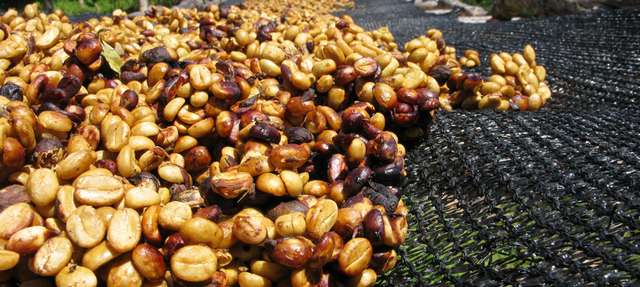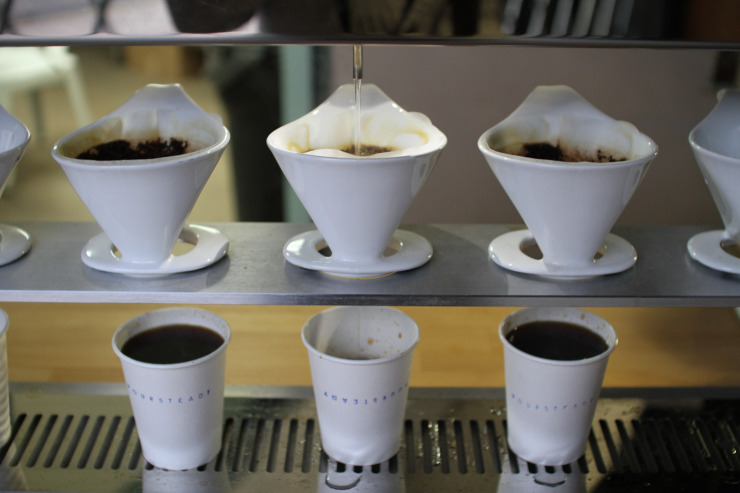What is coffee fat Crema? Espresso oil coffee except oil and other ingredients

Many friends who use coffee utensils other than Italian machines always struggle with the fact that the coffee they make is free of oil.
If we want to talk about this problem, let's look at it from two aspects. First, let's take a look at what's in a cup of black coffee besides water: caramelized sugars, flavored oils, quinic acid, and caffeine. If there is no flavor oil in the coffee, then there is no difference between stir-fried coffee and stir-fried corn (there is also oil in old corn). That is to say, it is decided that each cup of coffee from different producing areas has different taste mainly because of the difference of flavor oil. As a result, the taste of coffee becomes colorful and fascinating.
There are even questions about whether coffee made from a mocha pot is espresso. Italian is a way of extraction, and it can be regarded as Italian if you can't see the fat. But in fact, the grease is in the mocha pot, and there is an old-fashioned mocha pot with a thin curved tube on the bottom seat, and the coffee is made with golden grease like the Ruyi machine.
So do drip coffee machines, French presses, siphon pots, and hand-brewed coffee have any oil? For example, when the coffee is soaked, or even when the filter plug is pressed down, is the layer on top of the coffee in the pot considered grease? That's a layer of foam, but that's that the coffee fat is just rough.
We say that the coffee oil made by Italian mechanism is obvious and satisfying in coffee, which is determined by the method and principle of extraction. This method makes the coffee flavor oil dense and can stand in the cup for a long time, while the mocha kettle has high water temperature and insufficient pressure, even if there is grease, but it is not easy to stand for long. So he poured it into the cup and disappeared.
Drip coffee machines, siphon pots, manual brewing utensils and even pressure are extracted without pressure. For example, when the coffee liquid flows from the upper seat to the lower seat near the end of the siphon pot, the foam on the top of the coffee liquid is also the fat of coffee. It's just that this kind of grease is rough and loose and is not easy to detect in the cup.
Text / bonavita Wechat official account
Source: platinum Coffee College
Important Notice :
前街咖啡 FrontStreet Coffee has moved to new addredd:
FrontStreet Coffee Address: 315,Donghua East Road,GuangZhou
Tel:020 38364473
- Prev

What is the secret processing of coffee beans? The treatment of coffee beans the method of treating raw coffee beans
Honey treatment, called Honey Process or Miel Process, is called Honey Coffee. It is used in coffee gardens in Costa Rica (Costa Rica), Panama (Panama) and Taiwan. Honey treatment is a kind of treatment which is between the sun treatment and water washing. It keeps the coffee clean, although the brightness decreases, but increases.
- Next

This paper introduces the varieties of black coffee and the correct way to drink black coffee.
Aroma is not only the life of coffee quality, but also the best expression of coffee production process and roasting technology. The climate of the place of production, variety, refined treatment, harvest, storage, and the appropriateness of baking technology in the consuming country are all conditions that determine the aroma of coffee beans. Bitterness is the basic taste of black coffee, with differences in strength and texture. Raw beans contain only a tiny amount of bitterness, followed by sugar caused by baking.
Related
- Beginners will see the "Coffee pull flower" guide!
- What is the difference between ice blog purified milk and ordinary milk coffee?
- Why is the Philippines the largest producer of crops in Liberia?
- For coffee extraction, should the fine powder be retained?
- How does extracted espresso fill pressed powder? How much strength does it take to press the powder?
- How to make jasmine cold extract coffee? Is the jasmine + latte good?
- Will this little toy really make the coffee taste better? How does Lily Drip affect coffee extraction?
- Will the action of slapping the filter cup also affect coffee extraction?
- What's the difference between powder-to-water ratio and powder-to-liquid ratio?
- What is the Ethiopian local species? What does it have to do with Heirloom native species?

